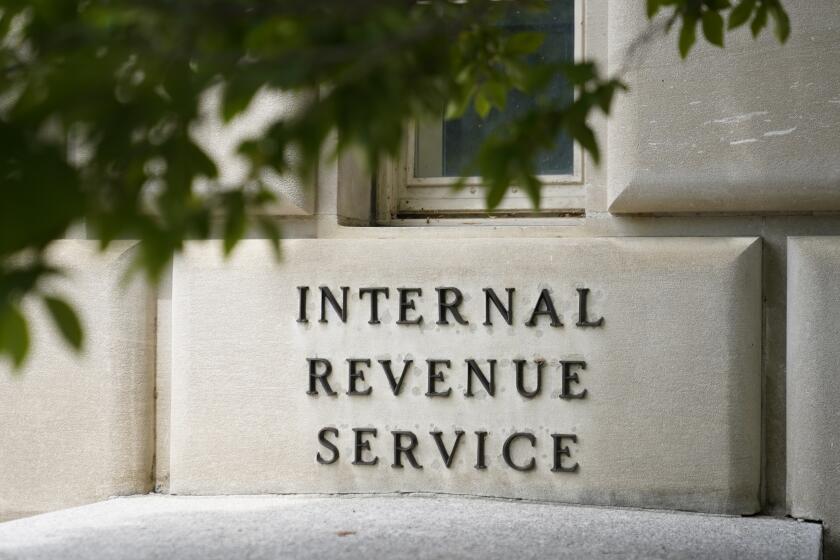Looking Past Low Money Market Yields
- Share via
It’s hard to generate much enthusiasm for money market mutual funds these days.
Yields on the once-popular investments have dropped to the lowest levels since the funds arrived on the scene in the early 1970s. Most money market portfolios aren’t even keeping pace with inflation anymore.
But as so often happens in the financial world, investments that look lackluster one moment turn up shining the next. The next time the stock or bond markets tumble, money funds--which don’t fluctuate in price--will be the place to be.
Until then, money market funds can still add an important dimension to your overall portfolio, provided you view them for their safety and liquidity features, not as a way to get rich.
They can be especially valuable as repositories for switching cash into and out of stock and bond funds quickly and at little or no cost.
Here are some tips for using and evaluating money funds in the current low-yield environment:
* Don’t overemphasize yields. Over time, the returns paid by money market portfolios don’t vary that much, so there’s no need to pursue the absolute best performers.
For example, the top taxable money fund for the past five years returned 7.6% annually, compared to 5% a year for the worst performer, reports the IBC/Donoghue Money Fund Report in Ashland, Mass. In the current environment, with yields compressed more than normal, there’s even less of a differential.
“I’d start by finding a family with a good selection of stock and bond funds,” says Sheldon Jacobs, editor of the No-Load Fund Investor newsletter in Irvington-on-Hudson, N.Y.
“Then I’d find the money fund within that family paying the highest after-tax rate,” he says.
* Keep an eye on expenses. A fund’s return depends on what its investments earn, less management, marketing and other costs. “All money funds have basically the same gross returns--the real difference is expenses,” says Jacobs.
The average money fund charges total expenses of 0.59% annually--equivalent to $5.90 on a $1,000 investment. Some of the more costly funds impose marketing expenses, technically called 12b-1 fees, which are used to compensate brokers or other salespeople. About 43% of all money market portfolios charge 12b-1 fees, reports the IBC/Donoghue Money Fund Report.
Another factor affecting expenses is size. Investors should lean toward money funds with $100 million or more in assets, which tend to enjoy greater economies of scale, says Walter Frank, chief investment officer for IBC/Donoghue Inc.
It’s worth noting that management companies are now subsidizing fees on 57% of all money market portfolios, says IBC/Donoghue. While this boosts the yield enjoyed by shareholders, it should be viewed as a temporary feature, subject to cancellation at any time.
* Consider specialized types of money funds. Depending on your income level, money market portfolios that pay tax-free interest might be a better deal.
These products buy short-term debt issued by cities, counties, state governments and various municipal agencies, the interest from which avoids federal taxes.
According to IBC/Donoghue, money funds in this category recently were paying about 1.98% on average, equivalent to a 3.09% taxable investment for someone in the 36% federal tax bracket. California-only money funds, which are exempt from both state and federal taxes for residents, were recently paying 1.97%.
Those figures compare to the average 2.64% fully taxable yield now offered by regular money funds.
Also worth considering are those money market funds that hold Treasury securities exclusively, because their interest avoids state and local taxes.
With yields on regular and Treasury-only funds now running at almost identical levels, the latter may be more attractive, especially when you factor in their greater safety, says Frank.
* Use money funds for systematic investing. A good way to ease a large lump sum of cash into the stock market is through a dollar-cost averaging plan.
Deposit the lump sum into a money market product, then instruct the fund company to switch a specified amount into one or more stock portfolios at regular intervals--say, $100 a month.
Rather than risking everything at what could be a stock market peak, with dollar-cost averaging you buy shares gradually and at a blending of prices.
“Dollar-cost averaging is one of the few investment strategies that has survived the test of time,” says Mike Scafati, a vice president at brokerage A.G. Edwards in St. Louis.
Having cash automatically rerouted from a money fund each month spares you the need to write a check for every investment.
* Don’t worry about safety. Though not insured, true money funds have never suffered any principal losses. And with tougher federal guidelines on which securities the funds can hold, they’re considered less prone to default losses than ever before.
This risk is not worth worrying about, says Jacobs. In a worst-case scenario an ill-fated money market portfolio might only slump 2% or 3%, he says.
Sagging Returns, Popularity
Investment returns on money-market mutual funds have been substantially lower during the 1990s than in years past. This trend, coupled with strong stock and bond markets, has led some people to abandon the funds.
In 1981 and 1982, when money- market portfolios paid double-digit yields, these investments accounted for three-quarters of all mutual fund assets. But now, with yields closer to 3%, money funds account for little more than a quarter of all assets.
Money fund Avg. return, Avg. return, assets as % taxable tax-free Year of fund assets money funds money funds 1981 77.1% 16.8% N/A 1982 74.1% 12.2% 6.9% 1983 61.2% 8.6% 4.8% 1984 63.0% 10.0% 5.6% 1985 49.2% 7.7% 4.9% 1986 40.8% 6.3% 4.3% 1987 41.1% 6.1% 4.1% 1988 41.7% 7.1% 4.8% 1989 43.6% 8.9% 5.9% 1990 46.7% 7.8% 5.5% 1991 40.0% 5.7% 4.1% 1992 34.0% 3.4% 2.6% 1993 28.6% 2.7% 2.0%
Sources: IBC/Donoghue’s Money Fund Directory, Investment Company Institute.
Note: Asset percentage for 1993 is as of Sept. 30. Return numbers for 1993 are annualized.
More to Read
Inside the business of entertainment
The Wide Shot brings you news, analysis and insights on everything from streaming wars to production — and what it all means for the future.
You may occasionally receive promotional content from the Los Angeles Times.










